

- JCRGraphics
- Starter
 Offline
Offline - Registered: 2/08/2020
- Posts: 35
The Complete History of Hockey in Ostrovia
I've seen some of these projects go back 100 years or more, but to really dive into Ostrovian hockey, we need to turn back the clock 60 million years for our point of divergence. In this timeline, the same forces that created Iceland also created a landmass that would one day become Ostrovia. For millions of years, the two main islands were connected with a massive volcano in the middle until about 250 thousand years ago, it exploded and was covered by the sea during the last ice age. Due to the geothermal heating and changes in ocean currents, Ostrovia along with Iceland and Greenland are warmer and more populated in this timeline. The Islands of Ostrovia are North of mainland Europe on the map.
The Islands of Ostrovia are North of mainland Europe on the map.
Indigenous Cultures
In pre-historic times, the islands of Ostrovia (Saelo to the West and Ostrovia to the East) were home to several Paleo-Eskimo cultures known roday primarily through archeological finds. Around 1200 BC, the Early Sikinigak culture (named for the Inuit word for sunshine) emerged in the area and extended throughout the two main islands and smaller islands. The Sikinigak lived primarily from hunting the numerous seals from which Saelo gets its' name (Sælø or Seal island) along with whales and caribou.
Slavic Settlement
From about 650 AD, the islands of Ostrovia were settled by Slavic peoples from what is now Northern Russia. They shared the islands with the Sikinigak inhabitants and thrived peacefully for three centuries.
Norse Settlement
Beginning in 977, the islands were invaded by Danish, Norwegian, and Icelandic vikings who set up permanent settlements on Saelo, but were never able to totally conquer the island of Ostrovia. The indigenous Sikinigak were pushed north while the Slavic Ostrovians were pushed east. By the time that the Ostrovians led by nobleman and war hero Vsevolod Khirov (later King Vsevolod I the Great) were able to kick the Vikings out of the islands in 1438, the Nordic culture had already taken root and the Saelic (more Danish based) and Jotunnish (more Icleandic based) languages were the main languages on the island of Saelo, while the Norse pagan religions remained a major part of the culture.
Kingdom of Ostrovia
Despite the island of Saelo having a more Nordic culture, the islands were united in 1440 as the Kingdom of Ostrovia under King Vsevolod I the Great. A great capital city was built in the ruins of an older Slavic settlement and was named Khirov. The official religion of the Kingdom was Russian Orthodox until 1610 when the Ostrovian Orthodox Church broke off. Throughout the sixteenth and seventeenth centuries, a first large wave of Jewish immigrants were welcomed in large numbers from Europe and they settled mainly in Southern Saelo as well as a small area in Southwestern Ostrovia.
First Saelic Rebellion
Fed up with being treated as second class citizens, the Saelic people rebelled against the crown in 1822. The rebellion was put down in a matter of months, however, the Kingdom instituted brutal rules on the Saelic people essentially trying to eliminate their unique culture forcing the use of the Ostrovian (strongly based on Russian) language, outlawing the use of Saelic and Jotunnish as well as public Norse worship. These cultural laws were coupled with crippling taxes that lasted for the next fifty years.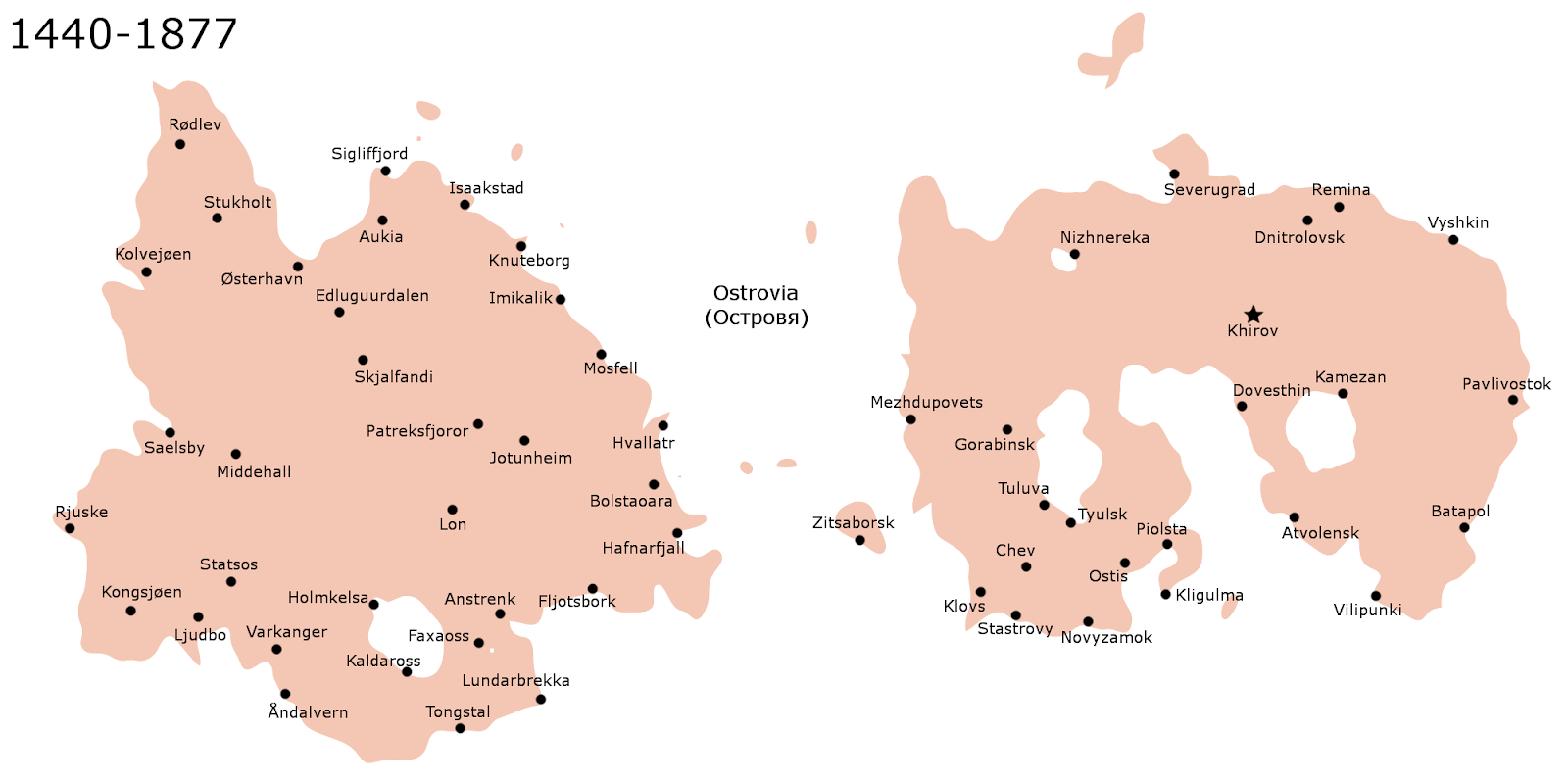
Second Saelic Rebellion
Having dealt with the oppressive cultural laws and taxes of the last fifty years, the Saelic people again rebelled against the crown in 1872. Two years of bloody back and forth battles commenced before the Kingdom of Denmark joined in on the side of the Saelic in 1874. The war continued on for the next two years until the United Kingdoms of Norway and Sweden got involved again on the side of the Saelic and pushed the Ostrovian Army back into a small enclave around Khirov. On June 28, 1877, King Rostislav IV surrendered to Saelic General Olivert Engilsson, and the island of Saelo became an independent nation.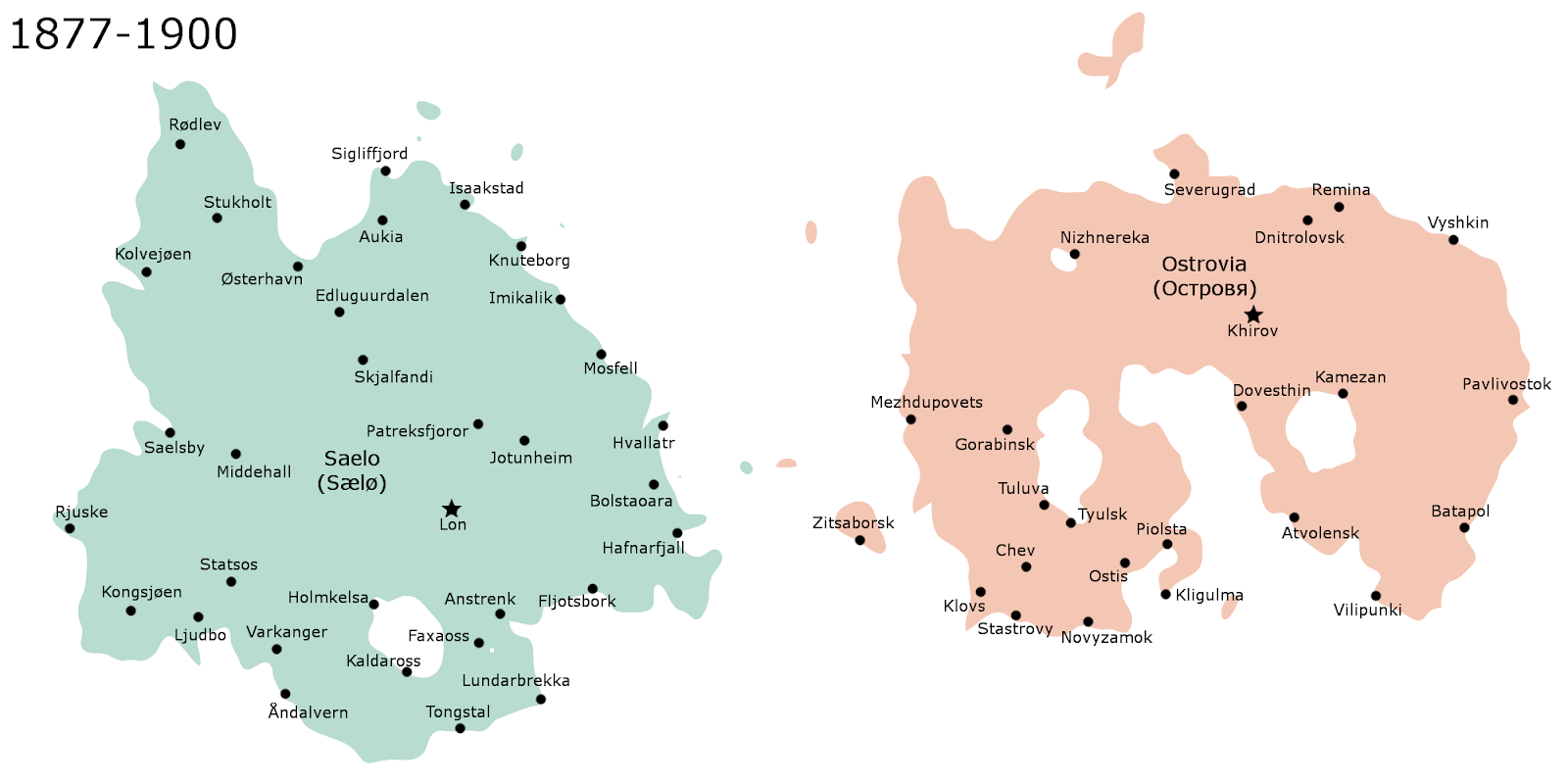
Saelic Republic
The newly formed Saelic Republic (Sælø for short) was set up as a Semi-presidential dual executive republic with the roles of prime minister and president split between a Saelic representative and Jotunnish representative. The new capital was in the city of Lon. The Jewish and Sikinigak minorities were not happy about the setup, but weren't treated too poorly under the new regime, so they went along with it. The Constitution of Saelo guaranteed the right to free speech and religion, and thus there was no national religion while Saelic and Jotunnish were recognized as the national languages.
Saelic Split
After coexisting peacefully for 23 years, the Saelic and Jotunnish delegates voted to separate the island along cultural lines with the Saelic and Sikinigak people mostly to the north and west keeping the name of Saelo and Jotunnish and Jewish people mostly to the southeast adopting the new name of Jotunmark. The split was peaceful, with very little bickering about borders. Middehall became the new capital of Saelo, while Jotunmark decided to use the city of Jotunheim rather than Lon. During the next few decades, another influx of European Jewish immigrants made their way into Southern Jotunmark (Suðrimark) where they adopted the Jotunnish language but kept their cultural identity as a separate people.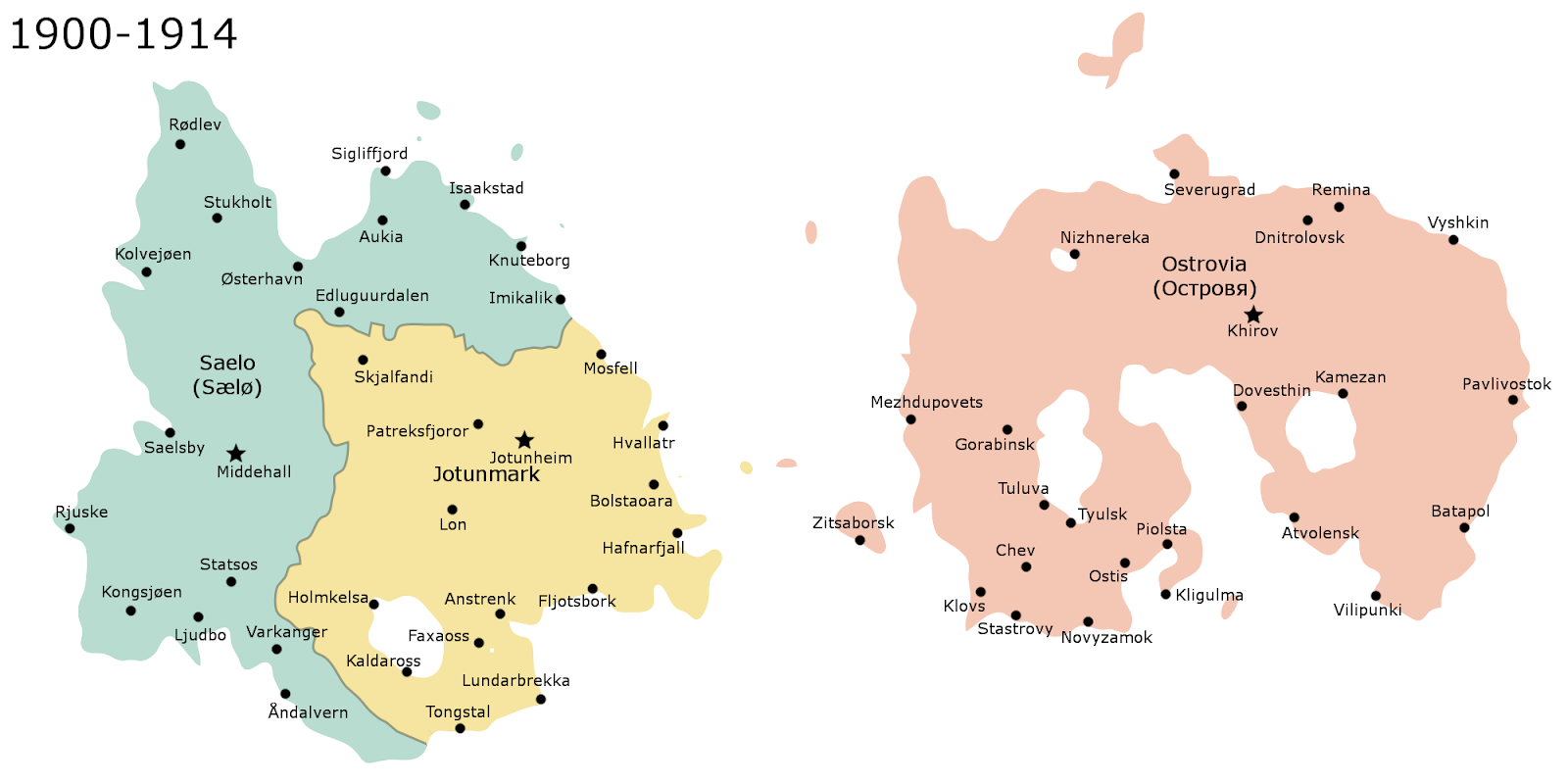
World War I
World War I was a particularly hard time for the people of the islands of Ostrovia with the Kingdom of Ostrovia aligning with the Central Powers and Jotunmark and Saelo with the Allies. Ostrovian King Vsevolod IX ordered his military to invade Jotunmark and Saelo, and at first they made quite a few gains until stalling out in trench warfare. During this time, the capital city of Jotunheim was captured, so the Jotunnish moved their government safely back to Skjalfandi temporarily. Fighting was especially tough in the region of Suðrimark (now Southmark) in Southern Jotunheim where the mostly Jewish troops of the area fought gallantly to slowly beat back the Ostrovians. At the end of the war, the Ostrovians were pushed back to their island and forced to pay reparations. King Vsevolod IX was executed and the nation transitioned from an absolute monarchy to a constitutional monarchy with the new King Vladimir III more of a ceremonial figurehead than any real power. 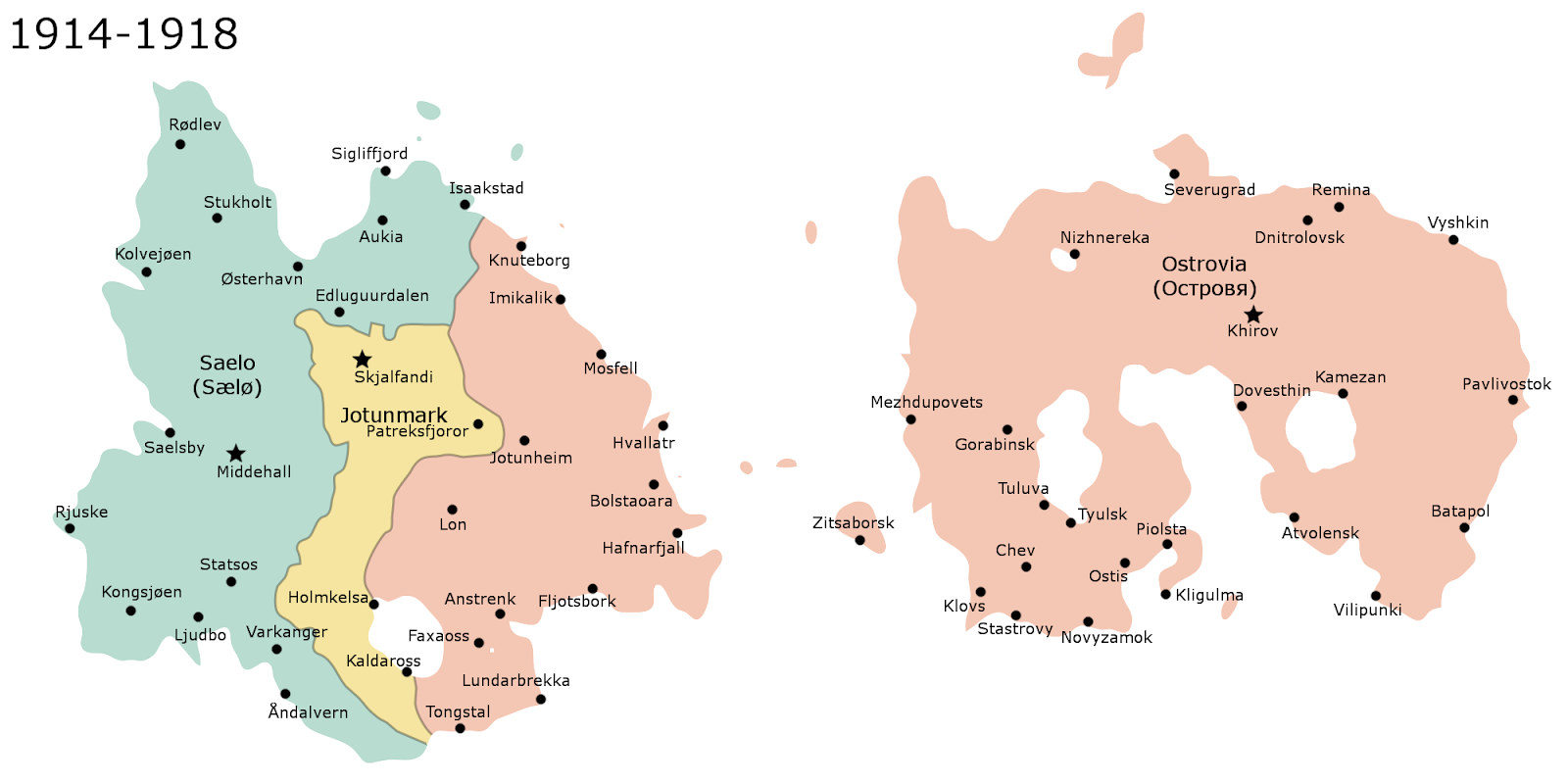
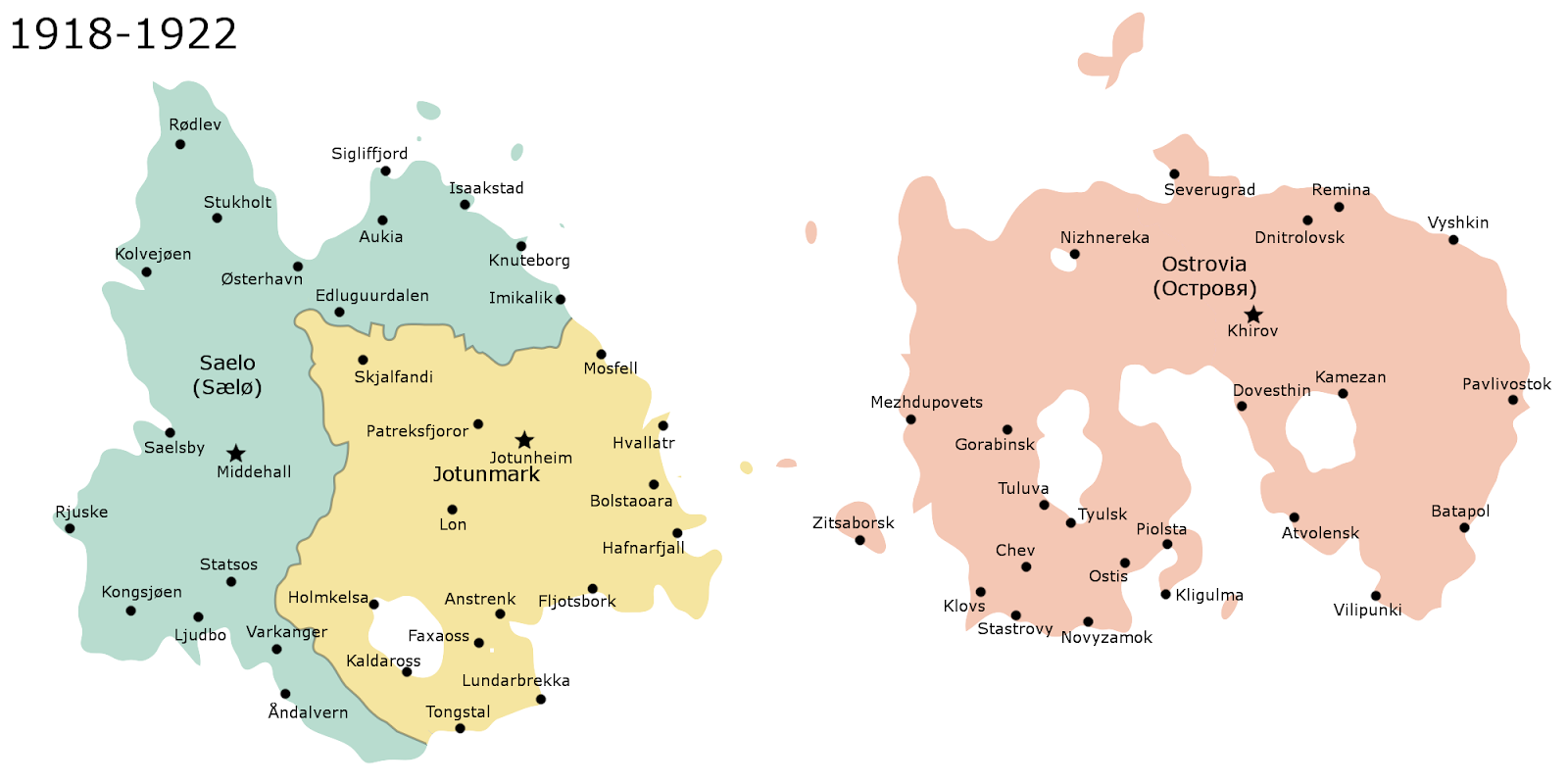
- JCRGraphics
- Starter
 Offline
Offline - Registered: 2/08/2020
- Posts: 35
Re: The Complete History of Hockey in Ostrovia
Before we get to our story which begins in the 1919-1920 hockey season, we will also look at the people of Ostrovia (collective name for the whole region) and their respective flags.
Ostrovia is a fairly ethically diverse area as evidenced by this map: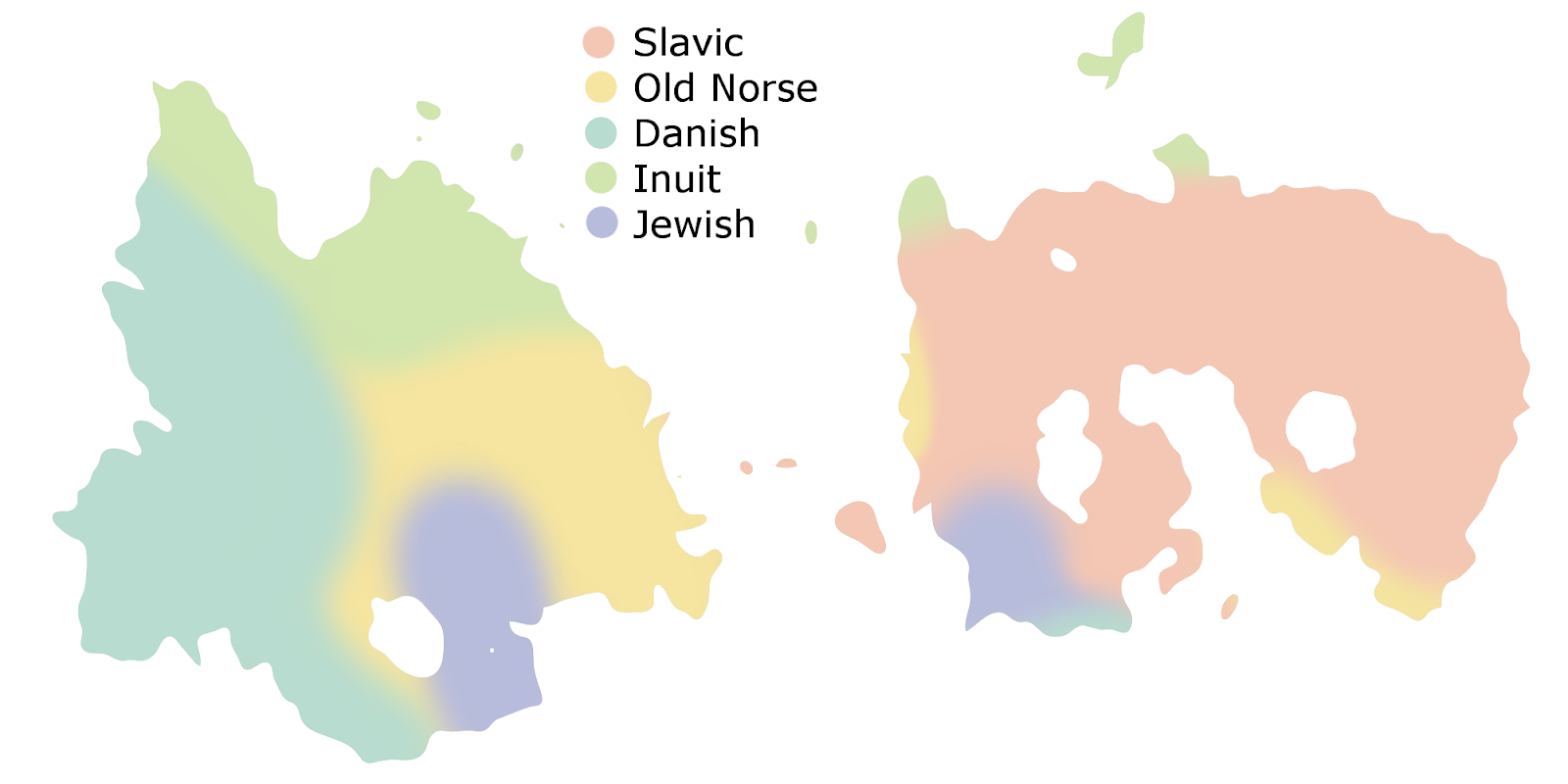
Flags
Ostrovia
Ostrovia's flag represents its' Norse and Slavic heritage and features the Ostrovian crown
1877-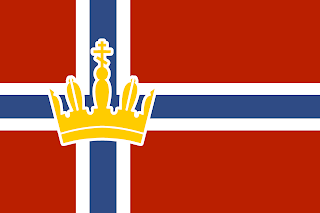
Saelo
Saelo's flag before the split still had the color orange which represented the Jotunnish.
1877-1900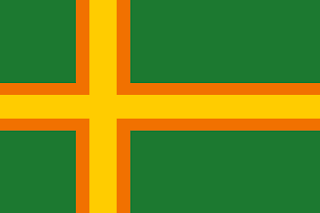
After the split, orange was replaced with white
1900-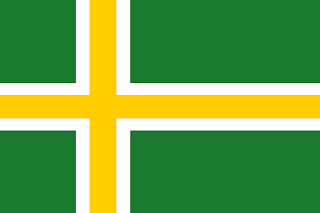
Jotunmark
Jotunmark's flag kept the same Nordic design, but featured orange as the main color.
1900-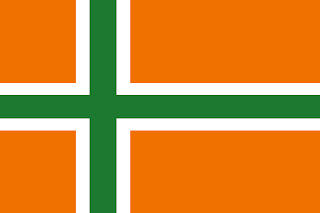
Last edited by JCRGraphics (3/03/2020 3:48 pm)
- •
- Dan O'Mac
- All-Star
 Offline
Offline 
- From: Green Bay, Wisconsin
- Registered: 5/22/2019
- Posts: 2,083
Re: The Complete History of Hockey in Ostrovia
You've piqued my interest, and I'm not usually one for completely fictional countries.

2x Alt Champion :: AltLB Champion Oklahoma City Bison - 2022 :: AltFL Champion New York Emperors - 2022 :: AltBA Champion Honolulu Kahunas - 2024-25

- NeoPrankster
- All-Star
 Offline
Offline - Registered: 2/09/2020
- Posts: 501
Re: The Complete History of Hockey in Ostrovia
Nice start so far. Looking forward to seeing the uniforms.
- Steelman
- superadminguy
 Offline
Offline 
- From: The Wild West
- Registered: 5/19/2019
- Posts: 1,639
Re: The Complete History of Hockey in Ostrovia
Wonderful presentation of a fictional country. I really like how you've presented your eras. Makes it easy to get an idea of the history and culture.

AHS Admin. Creator of the THL, PUCH, WHA: Redux and Retroliga.
- Thehealthiestscratch
- All-Star
 Offline
Offline 
- Registered: 5/30/2019
- Posts: 1,032
Re: The Complete History of Hockey in Ostrovia
Well I’ll be damned look who it is! Nice to see you over here JCR, can’t wait for what you have in store for us.


- Wallflower
- All-Star
 Offline
Offline 
- From: The True North
- Registered: 2/13/2020
- Posts: 1,642
Re: The Complete History of Hockey in Ostrovia
I already love the start, the flags, map, and history are great! I am excited to follow along.


- ProsecutorMilesEdgeworth
- Moderator
 Offline
Offline 
- From: Basically the middle of the US
- Registered: 5/18/2019
- Posts: 816
Re: The Complete History of Hockey in Ostrovia
Look who it is! Nice to see you JCR! What an amazing start to a project I liked back on the CCSLC!


Charlotte Racers (2016 AltHL Champions) St. Louis Explorers (2000 & 2011 AltBowl Champions) Minnesota Giants (2000, 2004, 2006 & 2014 AltBA Champions)
"The prosecution is ready, Your Honor. That is a pepper, of course."
- QCS
- All-Star
 Offline
Offline 
- From: 🌌
- Registered: 5/18/2019
- Posts: 1,887
Re: The Complete History of Hockey in Ostrovia
Really like how you've started this out! I always enjoy a fictional country's story and this will hopefully prove to be no exception!


- Section30
- Moderator
 Offline
Offline 
- From: Minnesota
- Registered: 5/18/2019
- Posts: 2,476
Re: The Complete History of Hockey in Ostrovia
Really excited to see how this goes!
Last edited by Section30 (3/03/2020 9:20 pm)


 1
1